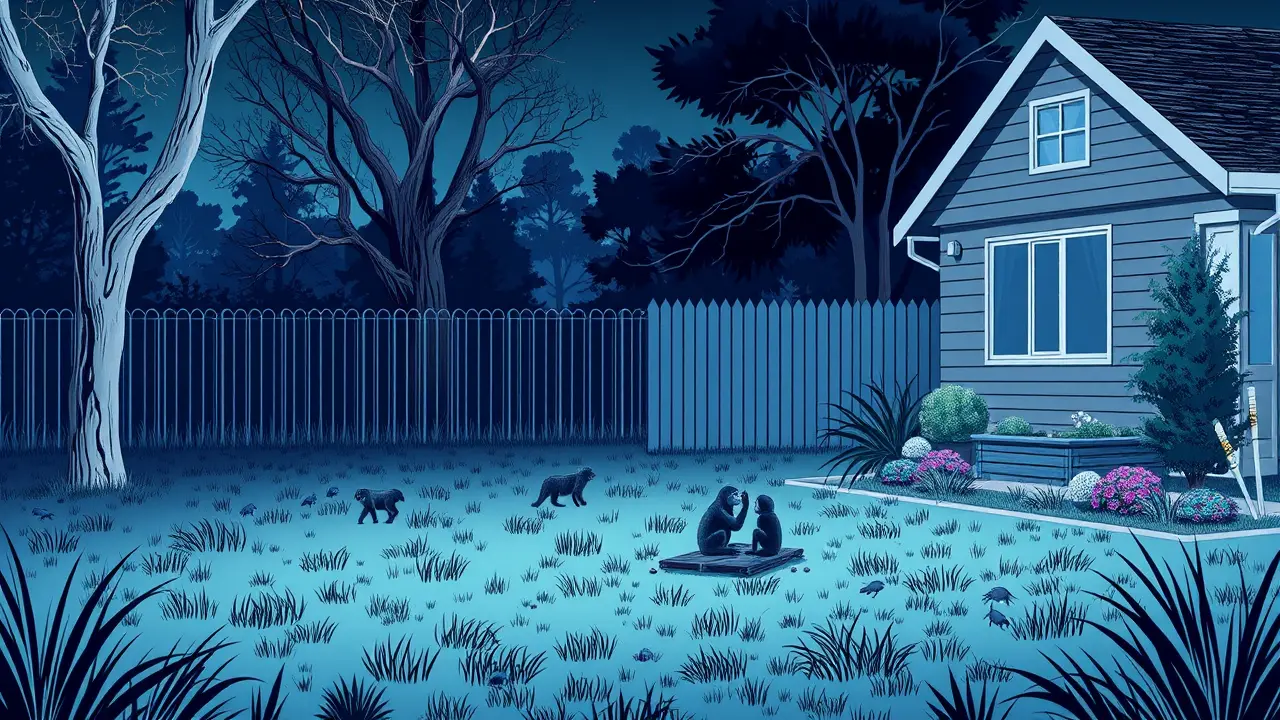
SciencebiologyAnimal Behavior
Woman Shoots Escaped Lab Monkey to Protect Children
EM
Emma Wilson
16 hours ago7 min read3 comments
The scene unfolded not in some distant, untamed wilderness, but in the quiet, domestic sphere of a Mississippi backyard, where the primal instinct to protect one's children collided with the surreal fallout of a modern scientific supply chain failure. It began, as so many unforeseen crises do, with a traffic accident—a truck carrying twenty-one Rhesus macaques, non-human primates en route to a federally approved biomedical research facility, was involved in a crash, shattering their containment and unleashing a wave of panic that far outstripped the immediate physical danger.The initial public alert, a frantic warning that these specific monkeys were potentially carrying a dangerous, undisclosed pathogen, set the stage for a community-wide lockdown and a media frenzy, framing the escapees not as lost animals but as vectors of a potential plague. Into this charged atmosphere stepped a local woman, a mother whose name has been shielded from the public, who found one of the remaining creatures in her yard, a space meant for swing sets and sprinklers, not for a standoff with a fugitive test subject.Her decision to use a firearm was instantaneous, a lethal response born from the terrifying calculus of maternal defense against an unknown, government-warned biological threat. The immediate aftermath, however, reveals a far more complex and tragic narrative than a simple act of self-defense.The Centers for Disease Control and Prevention (CDC) later confirmed that the monkeys were not, in fact, infected with a virus dangerous to humans at the time of their escape; they were being transported for quarantine, a standard procedure before being cleared for research. This critical piece of information, arriving too late, transforms the story from a clear-cut survival tale into a poignant commentary on the cascading consequences of fear, misinformation, and the fragile interface between advanced science and everyday American life.The Rhesus macaque itself, a species integral to medical breakthroughs from polio vaccines to COVID-19 research, became an unwitting casualty, its death highlighting the ethical chasm between its value in a laboratory and its perceived menace in a residential neighborhood. Broader context illuminates a recurring pattern: the transport of research animals, often conducted by third-party commercial haulers, operates under a veil of regulatory opacity, with local first responders and communities frequently left in the dark about the specific contents and potential risks of a cargo until a crisis erupts.Historical precedents, such as the 1995 Yemassee, South Carolina incident where dozens of cynomolgus monkeys escaped and were hunted down, show this is not an isolated failure but a systemic vulnerability. Expert commentary from bioethicists like Dr.Laura Kahn of Princeton University points to a critical need for transparent, community-engaged risk communication protocols, arguing that the default posture of secrecy in the name of security often backfires, breeding the very panic it seeks to avoid. Meanwhile, animal rights organizations, such as the Nonhuman Rights Project, have seized upon the shooting as a grim testament to the inherent cruelty and logistical perils of using highly intelligent, social primates as disposable research tools, amplifying calls for accelerated investment in human-relevant, non-animal testing methodologies.The possible consequences are multifaceted: for the woman involved, there may be no legal repercussions under Mississippi's broad self-defense and protection of property statutes, but the psychological trauma of taking a life under a cloud of misapprehension will likely linger. For the research industry, this event is a public relations disaster and a stark warning, likely triggering congressional inquiries and tighter regulations on animal transport logistics, insurance, and public disclosure.For the community, it’s a rupture of trust in the institutions meant to safeguard them, a lingering anxiety that the next truck accident could carry something far worse. Analytically, this incident serves as a microcosm of our turbulent era, where scientific progress, public safety, and animal welfare intersect in increasingly volatile ways. It underscores how a single point of failure—a crashed truck—can activate a chain reaction of institutional protocol, media amplification, and individual terror, culminating in a lethal outcome that nobody involved truly desired, a somber lesson in the high-stakes gap between risk assessment and public perception.
#lab monkeys
#escaped animals
#animal shooting
#public safety
#featured
#biomedical research
#Mississippi
Stay Informed. Act Smarter.
Get weekly highlights, major headlines, and expert insights — then put your knowledge to work in our live prediction markets.
Related News
© 2025 Outpoll Service LTD. All rights reserved.
